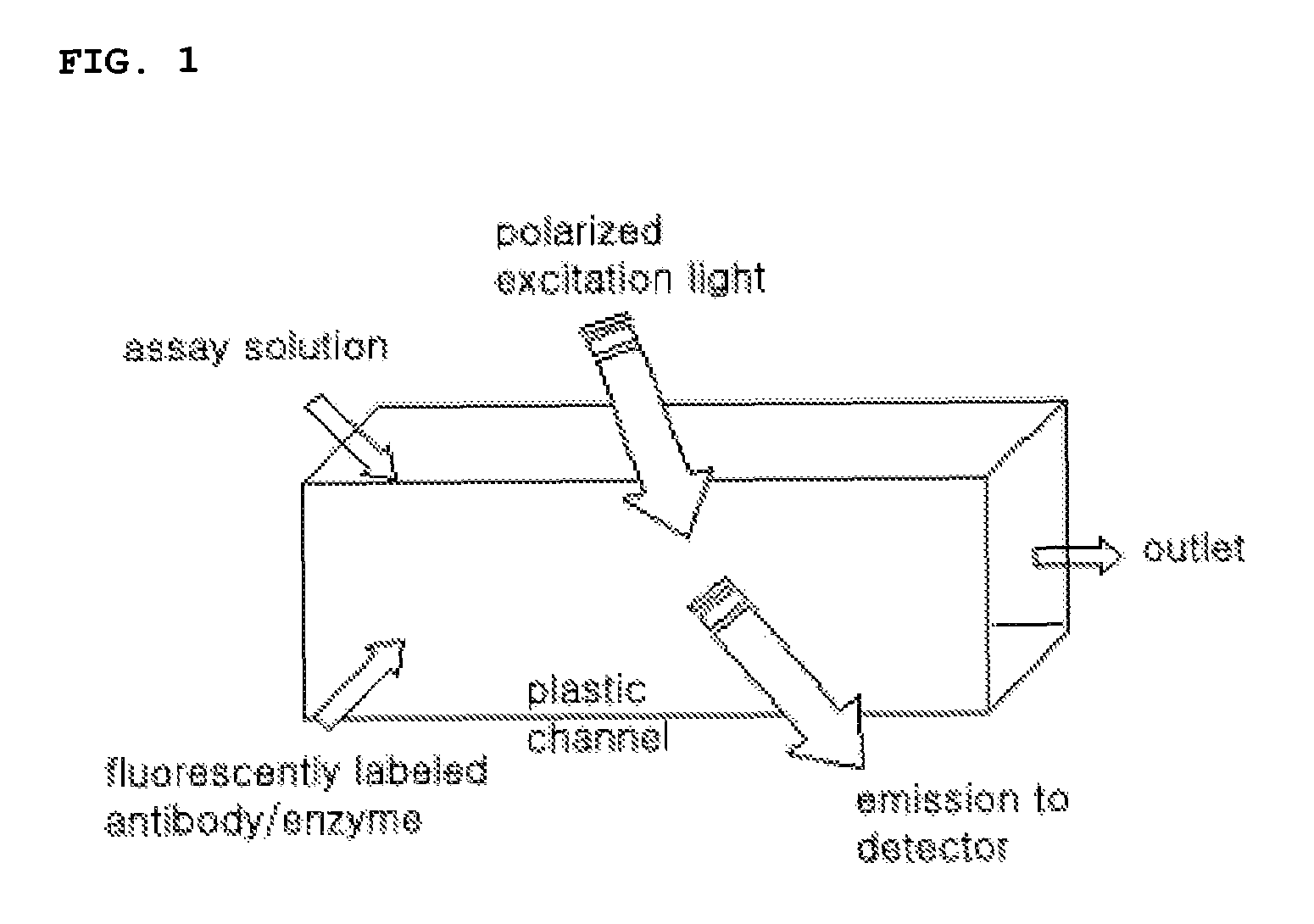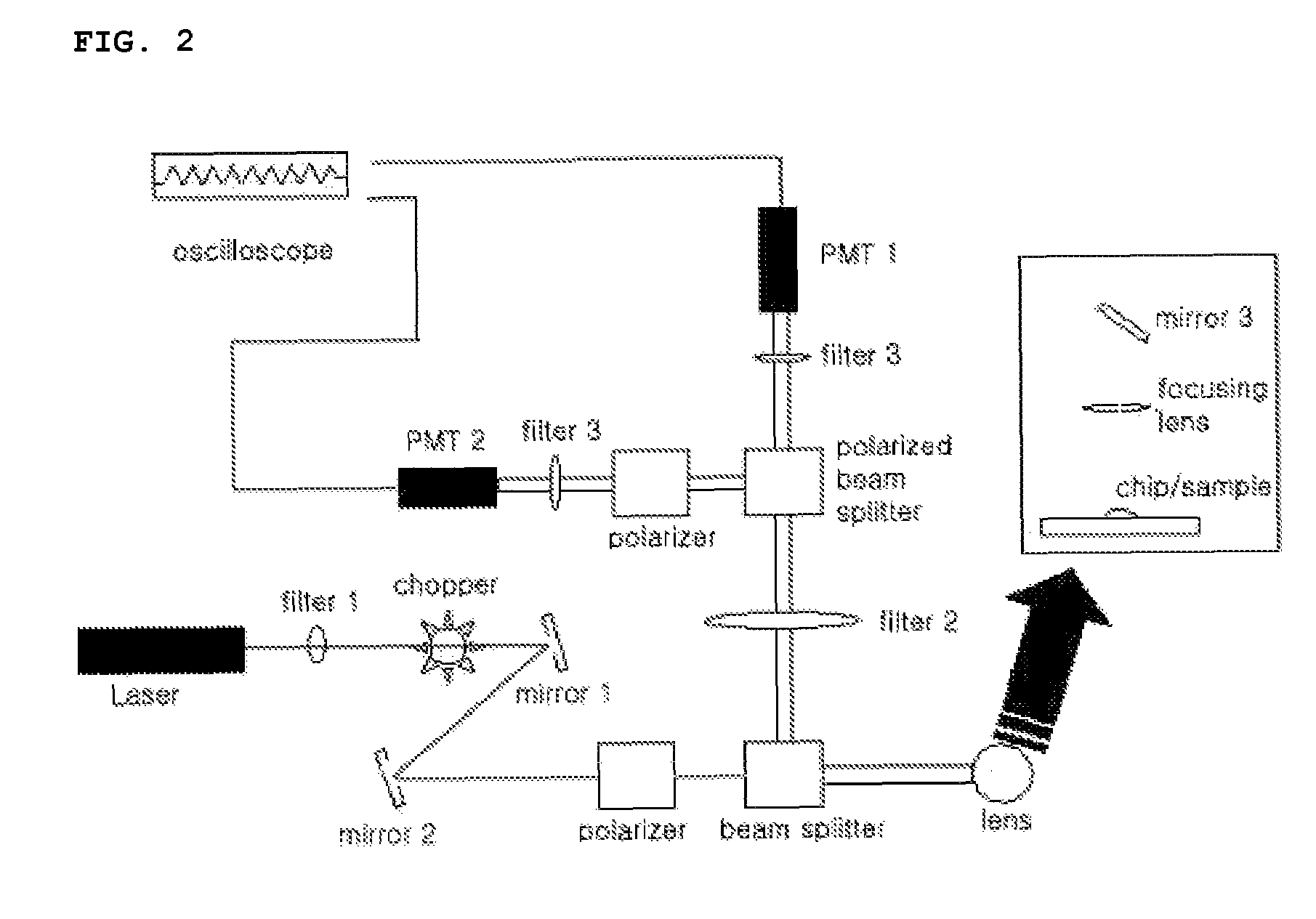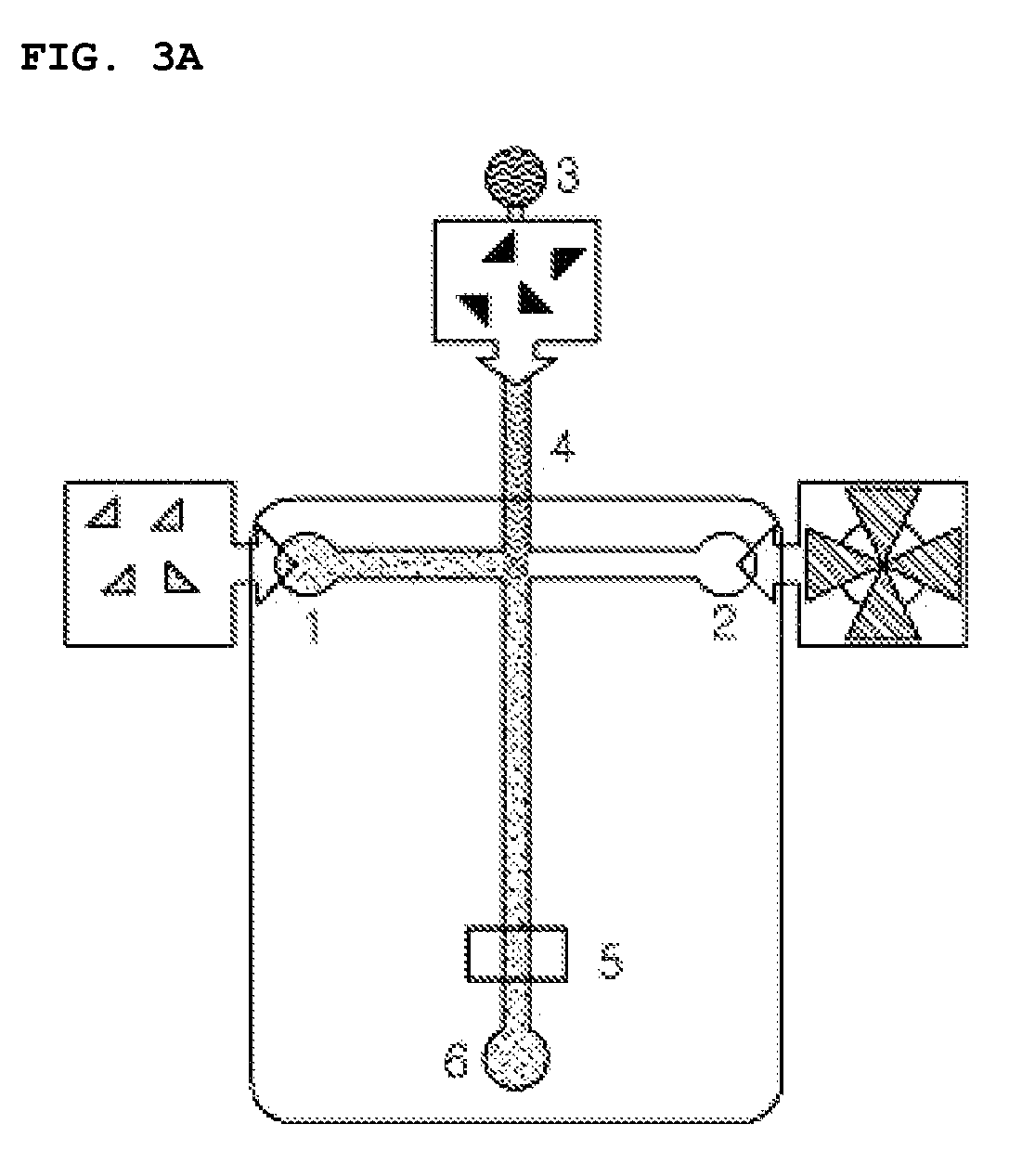Method and apparatus for measuring fluorescence polarization in lab-on-a-chip
a fluorescence polarization and lab-on-chip technology, applied in the field of lab-on-chip fluorescence polarization measurement system, can solve the problems of difficult to monitor the reaction of continuously flowing samples, difficult to collect a considerable amount of separated biomolecules for the large cuvette, and the high-throughput analysis system for measuring fluorescence polarization fp has not been well known. , to achieve the effect of enhancing the signal-to-noise ratio, reducing
- Summary
- Abstract
- Description
- Claims
- Application Information
AI Technical Summary
Benefits of technology
Problems solved by technology
Method used
Image
Examples
embodiment 1
[0093]Fluorescence polarization FP for the complex formation of biotin and streptavidin was measured in a 100 μL cuvette using an apparatus for measuring fluorescence polarization FP of FIG. 2, wherein an optical chopper was not inserted.
[0094]In this Embodiment, the measurements were carried out, and separately divided into three cases according to the respective samples used for the complex formation of biomolecule-fluorescently labeled biomaterial as follows (FIG. 5): (A) and (B), wherein only 1.25 μM of TMR was put therein; (C) and (D), wherein 1.25 μM of TMR-biotin was put therein; and (E) and (F), wherein 10 μM of TMR-biotin and 2.5 μM of streptavidin were put therein.
[0095]First, 100 nM of TMR used as a fluorescent probe for fluorescently labeled biomaterials was filled in the 100 μL cuvette of the lab-on-a-chip with the fluorescence polarization detection setup in FIG. 2, in which a polarizer was detached, and laser beam was irradiated to induce fluorescence. Then, the fluor...
embodiment 2
[0116]Fluorescence polarization FP for the complex of biotin and streptavidin in a lab-on-a-chip was measured using the apparatus of FIG. 2, wherein the optical chopper was not inserted. In this Embodiment, a lab-on-a-chip made of glass and composed of a microchannel having a depth of 12 μm and a width of 79 um was used instead of the 100 μL cuvette. After filling 100 μM of tetramethylrhodamine TMR solution in the microchannel of the lab-on-a-chip using a vacuum pump, a G-factor value was obtained in the same manner described above in Embodiment 1. Then, for the measurement, the samples were filled in reservoirs 1 and 2 of the lab-on-a-chip as depicted in FIG. 3A as following three cases: (A) wherein 1.25 μM of tetramethylrhodamine TMR was filled in the reservoir 1; (B) wherein 1.25 μM of TMR-biotin was put into the reservoir 1; and (C, D and E) wherein 10 μM of TMR-biotin and 2.5 μM of streptavidin were filled, respectively, in the reservoirs 1 and 2. Subsequently, the above sample...
embodiment 3
[0120]Fluorescence polarization for the complex of biotin and streptavidin was measured using the apparatus of FIG. 2 including the optical chopper of the invention. In this Embodiment, a lab-on-a-chip made of glass and composed of a microchannel having a depth of 12 μm and a width of 79 μm was used to measure fluorescence polarization for a complex of biomolecule-fluorescently labeled biomaterial.
[0121]For the measurement, the samples were respectively filled in the reservoir of the lab-on-a-chip as following three cases: (A) wherein 4 μM of tetramethylrhodamine TMR was filled in the reservoir; (B) wherein 4 μM of TMR-biotin was put into the reservoir; and (C) wherein 4 μM of TMR-biotin and 1 μM of streptavidin were filled in the reservoirs.
[0122]Fluorescence polarizations FP for the above samples were measured in the microchannel of the lab-on-a-chip using the apparatus of FIG. 2 including the optical chopper.
[0123]As a result, in case of (A), fluorescence polarization was measure...
PUM
| Property | Measurement | Unit |
|---|---|---|
| width | aaaaa | aaaaa |
| diameter | aaaaa | aaaaa |
| volume | aaaaa | aaaaa |
Abstract
Description
Claims
Application Information
 Login to View More
Login to View More - R&D
- Intellectual Property
- Life Sciences
- Materials
- Tech Scout
- Unparalleled Data Quality
- Higher Quality Content
- 60% Fewer Hallucinations
Browse by: Latest US Patents, China's latest patents, Technical Efficacy Thesaurus, Application Domain, Technology Topic, Popular Technical Reports.
© 2025 PatSnap. All rights reserved.Legal|Privacy policy|Modern Slavery Act Transparency Statement|Sitemap|About US| Contact US: help@patsnap.com



